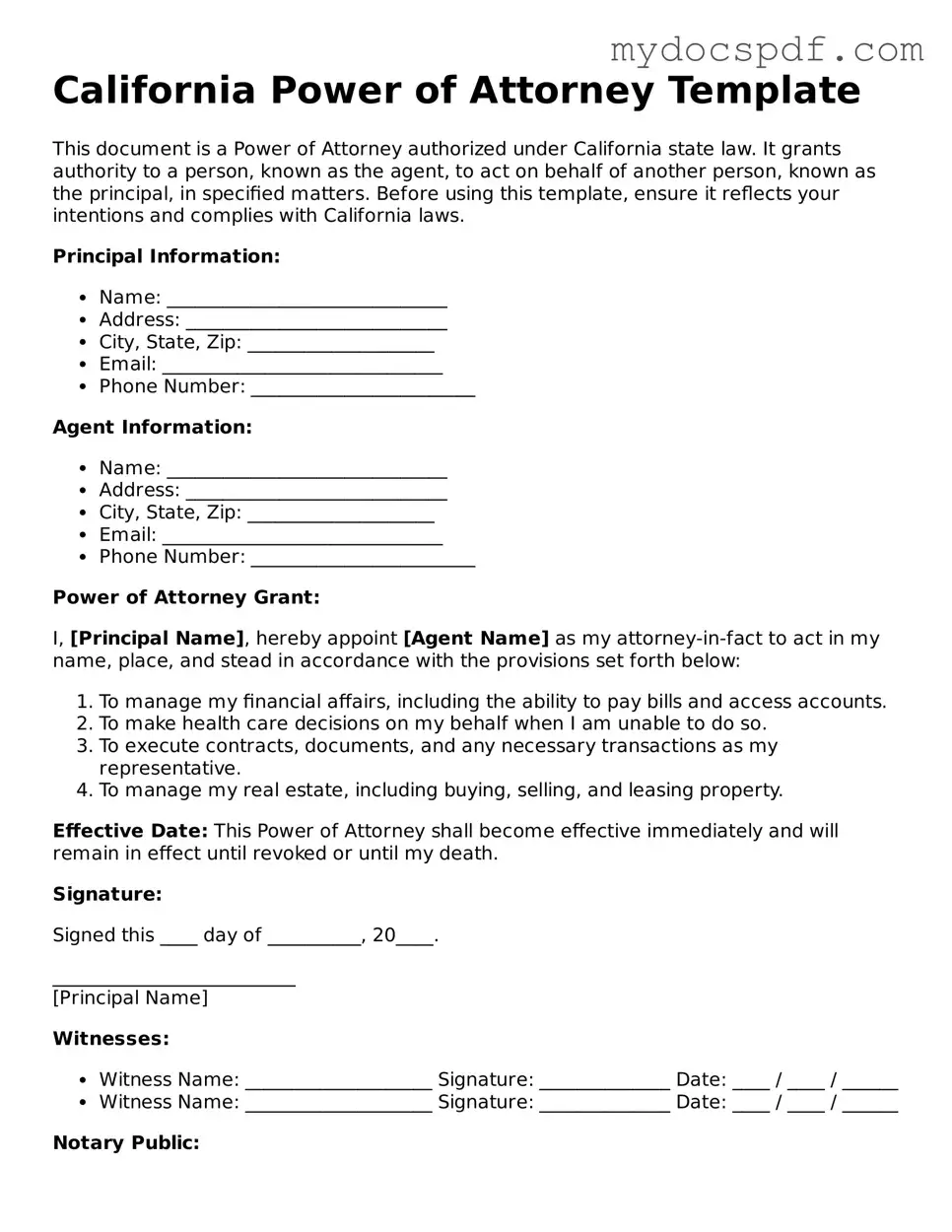California Power of Attorney Template
This document is a Power of Attorney authorized under California state law. It grants authority to a person, known as the agent, to act on behalf of another person, known as the principal, in specified matters. Before using this template, ensure it reflects your intentions and complies with California laws.
Principal Information:
- Name: ______________________________
- Address: ____________________________
- City, State, Zip: ____________________
- Email: ______________________________
- Phone Number: ________________________
Agent Information:
- Name: ______________________________
- Address: ____________________________
- City, State, Zip: ____________________
- Email: ______________________________
- Phone Number: ________________________
Power of Attorney Grant:
I, [Principal Name], hereby appoint [Agent Name] as my attorney-in-fact to act in my name, place, and stead in accordance with the provisions set forth below:
- To manage my financial affairs, including the ability to pay bills and access accounts.
- To make health care decisions on my behalf when I am unable to do so.
- To execute contracts, documents, and any necessary transactions as my representative.
- To manage my real estate, including buying, selling, and leasing property.
Effective Date: This Power of Attorney shall become effective immediately and will remain in effect until revoked or until my death.
Signature:
Signed this ____ day of __________, 20____.
__________________________
[Principal Name]
Witnesses:
- Witness Name: ____________________ Signature: ______________ Date: ____ / ____ / ______
- Witness Name: ____________________ Signature: ______________ Date: ____ / ____ / ______
Notary Public:
State of California
County of ____________________
Subscribed and sworn before me this ____ day of __________, 20____.
________________________________
Notary Public
